Freelance photojournalist Heidi Levine has been documenting the conflict between Israelis and Palestinians for more than 30 years. She's seen death, destruction, and displacement. But nothing, she says, compares to the
“horrific events” happening in Gaza right now.
The long-simmering crisis that boiled over again last week has quickly become some of the deadliest fighting in the area since 2014. More than 200 people in Gaza alone (including 67 children) have been killed, and Israeli airstrikes are destroying highways and hospitals all across the territory, according to The New York Times. More than 58,000 Palestinians in Gaza have been displaced from their homes and are seeking refuge in shelters, which the United Nations worries will lead to a spike in COVID-19 cases.
Levine, who lives in Tel Aviv, is there capturing it all, dodging bullets and skunk water in order to get the perfect shot—and alert the world to the immense suffering happening in the region. Below, she tells ELLE what it is like to be a photographer on the frontlines of the crisis.
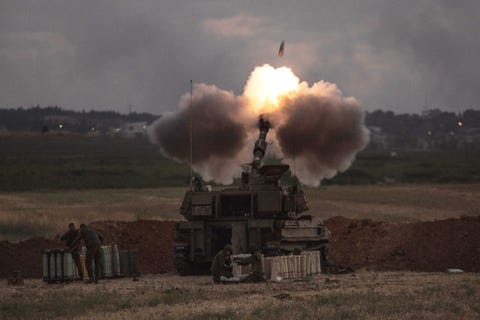
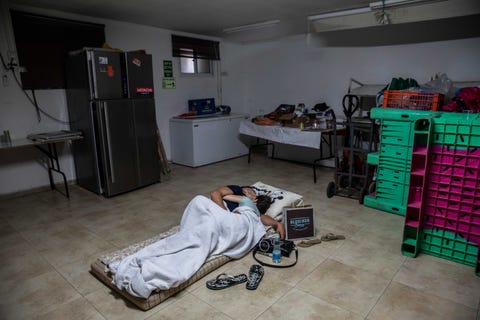
What is your goal when photographing the Israel-Palestinian crisis?
I just want the violence to come to an end, and yet sadly it never does. The circle of violence continues to spin out of control. My goal is to bring greater understanding of the cost of war on civilians. For more than three decades, I have weaved in and out of both sides, at times more than once a day. It all feels so personal and intimate. I am currently on assignment for the Associated Press, and am part of their team covering the Israeli side. Yesterday I photographed an Israeli artillery position along the border, wishing it would all stop. Before heading home, I went to a bomb shelter and saw a couple sleeping together on a small mattress. The woman told me she is five months pregnant, and really scared that the stress could trigger a miscarriage. Speaking to people is a really important part of my process in documenting the conflict. It helps people trust me.


How has your work changed over the last week?
The fighting between Israel and Hamas has become the heaviest flare-up since the 2014 Gaza War, and there are more and more horrific events unfolding each day. I have friends and colleagues on both sides, who are witnesses to scenes of horror unfolding before them. Everyone I talk to says this time feels different. The level of hatred and violence now inside Israel is beyond anything I have ever witnessed. So many Palestinians live with fear 24 hours a day.
Right now, I am focusing on capturing the experience of families in the city of Ashdod in southern Israel. I spent time with an Eritrean family seeking asylum. The mother is due to give birth any day now. Her daughter Heaven told me that she tries to help her younger siblings cope with the trauma of the sirens and booms of Israel’s Iron Dome intercepting rockets fired at Israel and often falling in their city by telling them to imagine something beautiful. The family is dealing with the conflict, while also worrying about their future and being allowed to stay in Israel. Today was the first time their mother allowed the children to be outdoors for a bit, but then there was a siren warning of a rocket fired from Gaza. I photographed the family taking shelter in a stairwell, because there was no way they could run in time to the nearby bomb shelter.
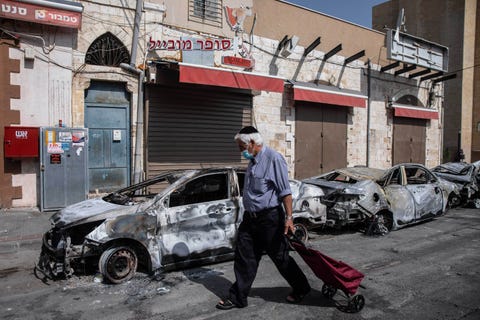
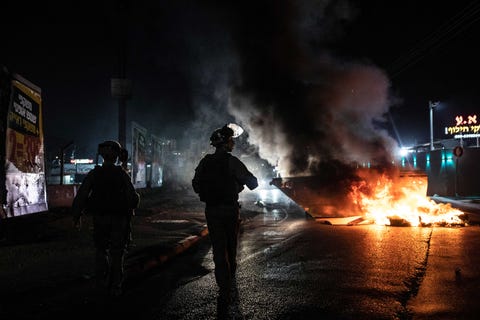
How do you stay safe while reporting?
A few days ago, I was in Ramle, a mixed city close to Lod in Israel where Jewish extremists, mainly teenagers, were on the main road in the city attacking Arab cars with sticks and stones. There were no police in sight. I have been in a lot of terrifying situations covering the Israeli-Palestinian conflict and in Libya and Syria, but I am extremely terrified of mobs, who have been known to attack media in the past. I got so scared that I took shelter in a wedding hall just as they closed the metal doors to protect the Arab guests inside. The teenagers had started chanting, “Death to the Arabs." Just a few days before that, the same group nearly lynched an Arab taxi driver just on the main road between Jaffa and Bat Yam. I know one of the photographers who witnessed the attack, and he is beyond emotionally shattered.
People have been really nice and helpful to me [while I take photographs]. The people I meet inside the bomb shelters or stopped on the side of the road always ask me if I am okay. Some even offer me water or food. I also have great, supportive colleagues. Although we all work for competing news organizations, we help one another and share information, putting safety above all else.
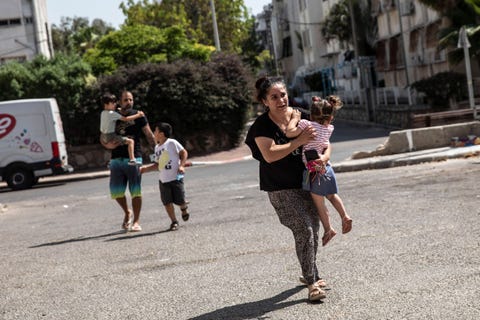
How has this affected you and your family?
In 2014, my assistant and driver Ashraf al Masri had his home reduced to rubble. On the first night of this current war, he also lost seven family members, including five children, when a rocket launched by Islamic Jihad launched towards Israel fell back into Gaza near his home. The other night he called me. He had over a dozen relatives taking shelter in his home, many of the women holding small children and babies. Each waved and said, "Hi Heidi, we love you!" It was a challenge to hold back my tears. Ashraf said, "I speak with you now, but I do not know if I will be here tomorrow." I spent the night crying thinking about what his family, and so many others, have endured. I told him to try and move somewhere safe, even offering to help them financially, but honestly no place in Gaza is safe for him and his relatives right now.
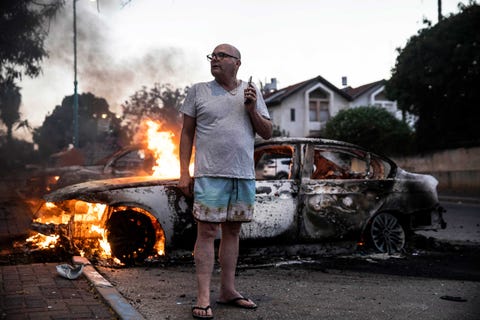
How do you deal with the pressures of being a journalist in a war zone?
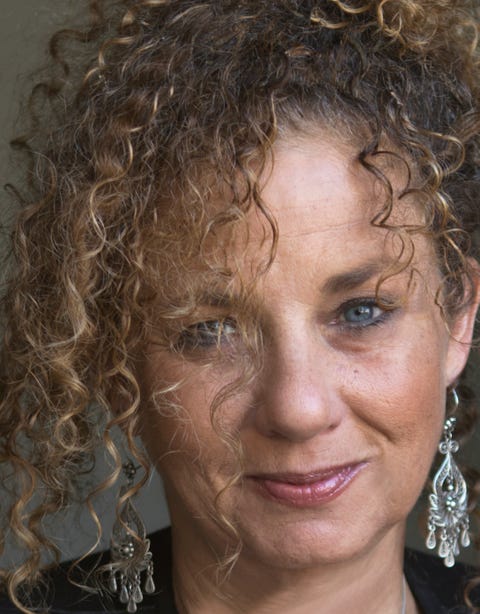
I try to speak as much as I can about my feelings and what I witness. I spend a lot of time talking to my mother, who is always afraid for my safety, but still remains a steady support. My son Michael, who is currently living in Poland, is also really supportive and proud. He checks in on me, and monitors the news 24/7. I used to wear a jacket of his for good luck, but now it is too warm outside. I also have two Maltese dogs named Romeo and Juliet and two cats that my daughter Ashley and I rescued. They all sleep in bed with me. I scuba dive, and once this all hopefully calms down, the best way for me to reboot my soul will be to scuba dive in the Red Sea in Egypt’s Sinai Desert. For me, that's the best therapy of all.
This interview has been lightly edited and condensed for clarity.
